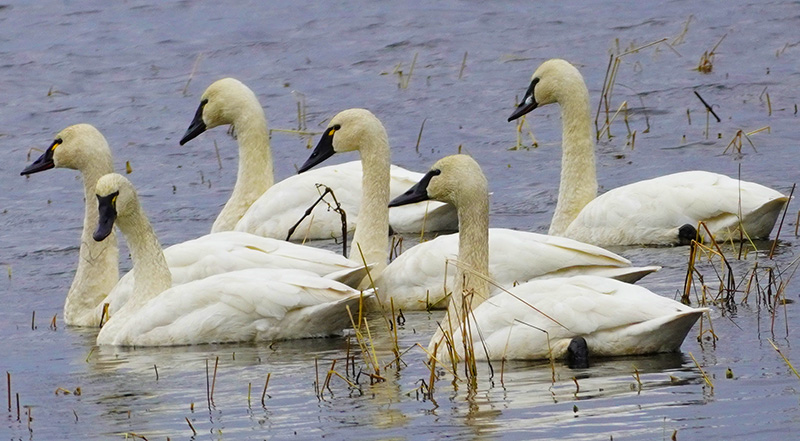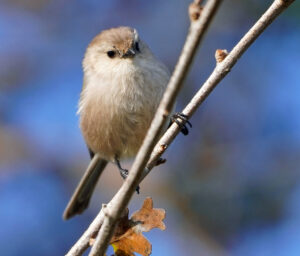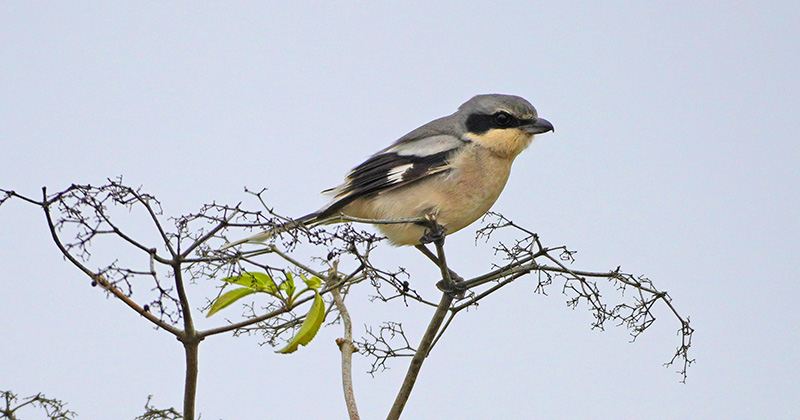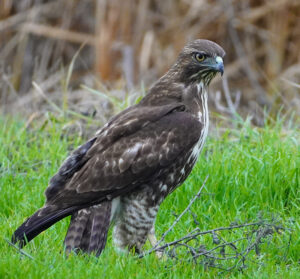When the San Joaquin River National Wildlife Refuge was established in 1987, its primary purpose was to protect winter habitat of the then-endangered Aleutian cackling goose. Since that time, the refuge has provided an “umbrella effect” for over 200 species of birds, ranging in size from the tiny Bushtit, which weighs in at less than an ounce, to Tundra Swans, which average around twenty pounds and fly over 4,000 miles from Arctic breeding grounds to their California winter habitat.
Monday, January 2, Stanislaus Audubon Count Coordinator Harold Reeve counted 135 of the majestic swans during the 122nd Annual Audubon Christmas Count, which began in New York in 1900. First formed in 1977, Stanislaus Audubon Society has conducted Christmas Counts every year since 1978. Monday’s count of wintering swans was the highest in anyone’s memory.

Featuring a panoply of raptors, songbirds, ducks, swans, geese and “dickey birds,” San Joaquin River National Wildlife Refuge (SJRNWR) now encompasses almost 8,000 acres. Once down to a population of fewer than 600 birds, Aleutian Goose numbers now exceed 200,000. Thirty years ago, local birders were thrilled to find half a dozen Snow Geese on the refuge. Today, they count tens of thousands.

Like most everyone, birders are thrilled when a Bald Eagle joins the wintering waterfowl on the refuge, and some birders saw one these majestic birds during Monday’s count. For veteran birders like Reeve, the spectacular birds — Bald Eagles, Tundra Swans, White Pelicans, and all the wintering waterfowl — are no more or less important than the dickey birds — sparrows, bushtits, songbirds and towhees — which also comprise the diverse avian population of one of the most important wildlife habitats in California.
The oldest ongoing citizen science project in the world, the Audubon Christmas Count now joins eBird in tracking and mapping bird populations around the globe. The ever-growing eBird database has become an important environmental indicator, especially in the United States.
Monitoring bird populations of all kinds is a way of monitoring our own environment. In 1983, deformed ducklings and other baby birds at Kesterson National Wildlife Refuge alerted authorities to high levels of toxic Selenium and pesticides in agricultural runoff water that was delivered to the refuge from Westlands Water District. The discovery brought years of litigation and reform, spearheaded by the Natural Resources Defense Council and the U.S. Bureau of Reclamation.

In the 1960s, when birders recorded large declines in numbers of California Condors, Bald Eagles and Osprey, subsequent research led to the discovery of high levels of DDT in the birds’ eggshells, which caused thinning and breakage. DDT was then found throughout the environment; high levels were even detected in human mothers’ milk.

Use of DDT was banned in 1972. Absent for decades, nesting Bald Eagles have now returned to Stanislaus County and other locales throughout the Central Valley.
Just as exciting as the return of the Bald Eagles, local birders thrill to winter visits of ducks, geese and swans, even while enjoying the year-round presence of the hawks, shrikes, sparrows and song birds that continue to thrive under the protective umbrella of the San Joaquin River National Wildlife Refuge and other such sheltered areas throughout the state. Last Monday, amateur scientists and Stanislaus Audubon Society helped measure the ongoing progress of global efforts to preserve our priceless wildlife heritage. Nature’s grandeur was on full display.

From small beginnings to now encompassing nearly 8,000 acres. Let us all remember what an earnest effort can accomplish. Make the intent and allow the wild to fill in the rest. We need many more habitats to encompass our lands, they are natural carbon sequestors.
Please stop clear-cutting and clogging up waterways. We do not need man-made chemicals to survive.
Praise, the LORD we have been gifted recently with an abundance of vital water.
Thanks, Eric, for the informative article highlighting our local bird protection and history of the Christmas Count. As Thomas Lovejoy said: “If you take care of the birds, you take care of most of the big problems in the world”
Right on, JO. Taking care of the birds is one big way to take care of the world.